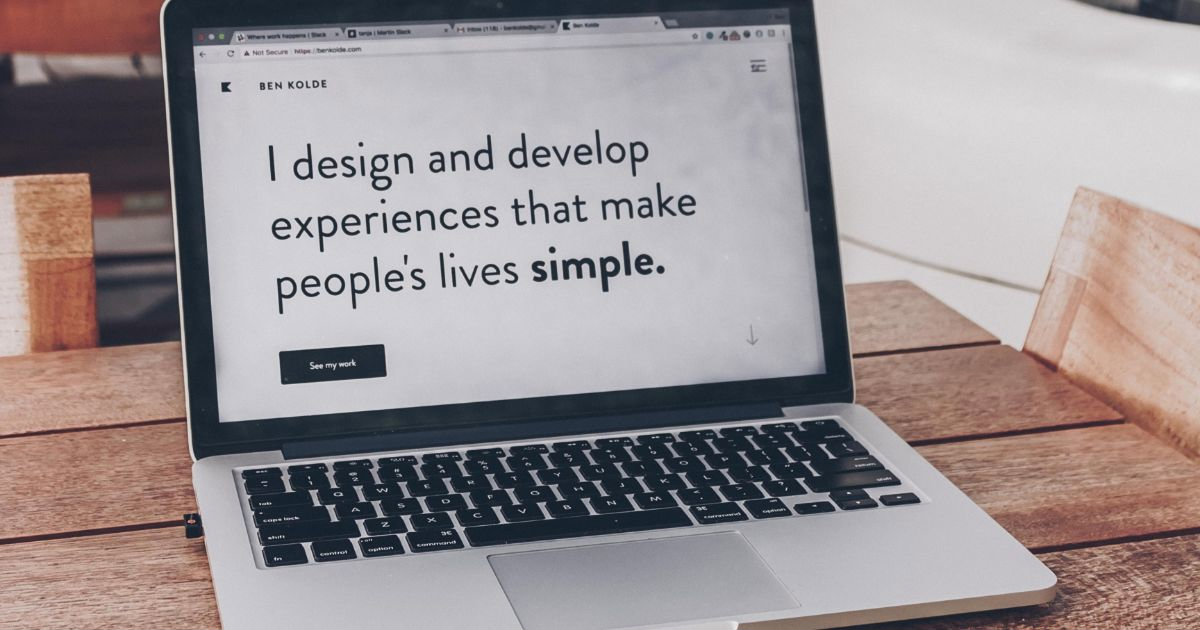What to write on your website’s About Page
Find out why your about page is not about you
Typically every website has a so-called ‘About page’. The About page is often the most visited page of first-time visitors to a website. Ideally, this is where your potential customers find out why they finally found the right product or service to help them. Unfortunately many about pages don’t convert as well as they could do. In this blog post, we will have a look at how to improve your about page to start converting those visitors into potential customers.
About us? No, about your customer
The most important thing to get right on an about page is that your about page is not about you or your company but instead it is about your customer. The about page is not the place for you to shine. It is the page where your visitors, also known as your potential customers, find out what you have to offer to them. They learn how your company helps them solve their pain, problems and issues. They get to understand how they fit into the solutions you offer. Once your visitors read your about page they know why they should stay longer on your page, what to do next and how to connect with you.
Know your audience
In order to write a great about page, you need to be crystal clear about who you are trying to target with your page. Many companies try to stay broad and vague on their about page thinking that a wide array of people would visit the page. However, the contrary is true. The more specific you address your ideal website visitor and potential customer the better all of your website visitors will understand who you are and what you offer.
Write in first person
When writing text for your about page, make sure you write in 1st person and not in 3rd person. Write in the perspective of ‘I’ or ‘We’ and not in ‘he’ or ‘they’. Writing in the first person makes it more personable and less corporate just like if you were talking to your website visitor in person. This creates a more conversational and welcoming tone.
Avoid corporate language
Your website is not the equivalent of a corporate image brochure because websites are much more dynamic and can show what you and your company are really like. Use the type of language that would be normal to use with your customers. Let your personality and company culture shine through. Be conversational and interesting instead of boring your visitor with yawning content. In very simple terms – be and act like a human.
Start with an opening statement
It should be very easy for your visitors to understand within seconds what your page is about and if it is for them. Try to summarise what you offer and who’s problems you are solving in one or two sentences. For my business, the opening statement is: I help wool industry businesses communicate successfully online. A statement should clearly address or define your target audience, tell them about your services and what benefits they get out of it. It might take some time to create the perfect statement, but once you do, it will make things so much easier.
Share why you do what you do
Another important element of the about page is to talk about why you do what you do. By sharing your values you will become better understood and trustworthy. Sales arguments are much better to understand if we know the reason why. A good video to watch on this topic is Simon Sinek’s Ted Talk ‘Start with Why‘.
Tell stories
We love to hear a good story. Through stories we learn, understand and remember. So instead of listing a bunch of facts or product properties, tell a story of how your product or service helped solve a particular problem. Tell the story why you started a particular program, service or added a product feature.
Provide social proof
Another powerful way of communicating about your company is to provide social proof in form of awards, certificates or media mentions. 3rd party validation will help your company gain trust and positive reputation.
Add Testimonials
Word of mouth is still one of the best advertisement methods today. By adding testimonials to your about page you can more easily convince your potential customers to trust you. Ask your existing customers to provide you with a statement about your products or services and how they benefitted from it. Add them to your about page with a photo, name and company.
Keep your history short
Some about pages are mainly filled with the company’s history. While there is always a lot of interesting history within the wool industry, it is better to keep this part short. If your company’s history is important you can always add a new page called ‘History’ and link to it from the about page. A long history means a lot of text, dates and figures which can be boring to read through. Make a very short summary that supports your credibility and present the details on another page.
Include photos of your team
Another great way to build trust is to show the people working in your company. Photos of your team make your site more human and relatable. Once your potential customers have a face to the name it also reduces the barrier for them to contact you. Pictures can be group photos of the whole team or showing a portrait photo of each team member.
Showcase photos of your company
Besides showcasing staff photos it is also helpful to show images of the company itself. Presenting images of warehouses, office buildings etc support the goal of building trust with the visitor.
Integrate video
In addition to photos a video about your company and what you do can also be a great asset to include on the about page. However, don’t rely solely on video as some people prefer to read and look at images instead. Also, many website visitors are using their mobile devices and may not be in an environment where it is possible to watch a video but still wish to access information about you.
Have a ‘call to action’ button
If your visitors have made it through your about page, they are most likely interested in your products and services. This offers you the opportunity to ask them to take some action such as getting in contact with you, subscribing to your newsletter, visiting a particular page or downloading a free e-book. The only thing is, you need to ask them to take action. You can do this by including a so-called ‘Call to Action Button’. A button that clearly highlights what action the reader should take next.
Link social media accounts
One form for visitors to take action is to connect with you on social media. Visitors may also want to find out more about you by checking out your messages on social media. Make it easy for them to connect with you elsewhere online by including your social media accounts in your about page.
Update regularly
An about page should not be static but instead be updated regularly. Make sure the about page reflects any changes and represents what is happening within your company.
Now it is time to review your ‘About page’ and see if you have included all the different elements mentioned in this blog post. I know I can still improve my about page. Try to take the perspective of your potential customer and read through your about page once again. Does the information you provide make sense for someone who is trying to figure out what you do and how you can help them?
Take your time to update your about page to get it right, because it will be totally worth it.



